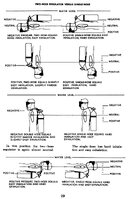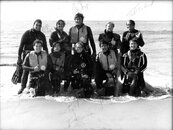SanDiegoSidemount
Contributor
I am the type of guy that wants to know the whys of something instead of just it happens by magic. I feel I was trained by a great instructor (in my limited experience) but it was PADI, so the requirements have been watered down a bit.
I actually think the new books are way better than the old ones ever were. I wish a lot of these had been available back when I was trained off the old NOAA Diving Manual, which was SO dry and not always practical information for recreational divers. (But still good stuff, and very thorough.)
The agency Open Water textbooks are terrible. They are so "watered down" they need to ship them to you in a ziploc baggie, they're soaked!
If "not watered down" is what you're looking for, a lot of these are ridiculously comprehensive, and all of them are very up to date with the latest science and practical advice.
A few dive "textbooks" I can recommend:
The Complete Diver, by Alex Brylske. Encyclopedic and comprehensive. Take it in small doses over a longer time. The definition of "not watered down". No stone unturned here. This is the like a new NOAA manual, but way more practical information for recreational divers.
The Six Skills and Other Discussions by Steve Lewis. A classic. Also Staying Alive by Steve, focused on risk management. Again, you'll get no "watered down" answers from Steve.
Deco for Divers. Dense. The final word on deco books. If you're on your way to becoming a tech/deco diver or an instructor, you gotta know all this stuff. Good to study even if you're only going as far as no-deco and nitrox, but may be a bit TMI for recreational diving. The least "watered down" of anything you'll ever read about scuba. (Unless you are into academic journals and conference proceedings.)
Diver Down, by Michael R. Ange. A pretty standard text for AOW students and/or Rescue Divers. Accidents and how to avoid them. Read this along with Staying Alive above.
Scuba Confidential, by Simon Pridmore. Extremely practical, enjoyable and well written. A nice and relatively quicker read for advancing divers.
I have to mention Scuba Snobs' Guide to Diving Etiquette, books 1 and 2, but Debbie and Dennis Jacobson. These are funny, fun, easy quick reads filled with great advice on how to be the kind of diver that other divers want to dive with. Watered down, but with tears from laughing so much.
Diving narratives I enjoyed:
Caverns Measureless to Man, by Sheck Exley. Discover how they figured out all this deep/cave stuff in insanely risky pioneering dives.
Shadow Divers, by Robert Kurson. A well written, suspenseful book about one of the more significant wreck discoveries of the last century.
Lost Wife, Saw Barracuda, by John Kean. Read this if you intend to become an instructor some day. Scuba shenanigans in and out of the water, from a DM/instructor's point of view.
Last edited:






